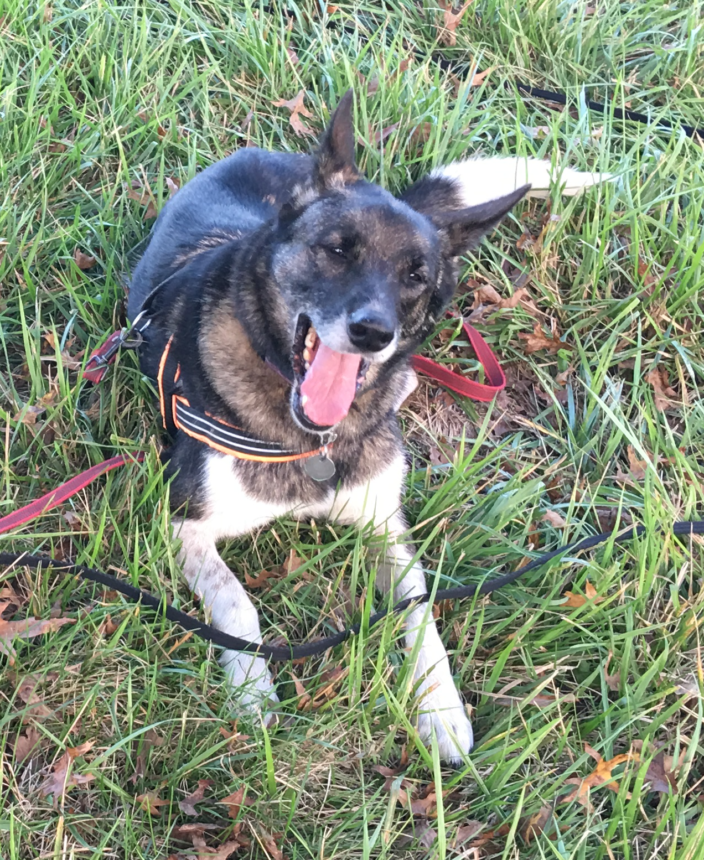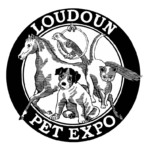Can you be with me?
This is a question that I ask my dogs when we walk together. Drawn to the sights and scents of the great outdoors, they often seem to forget that they have a walking companion at the other end of the leash.
I don’t ask them to walk at a competition-quality heel. What I do ask, though, is that they remain connected to me. Or more precisely, I ask that we remain connected to one another.
We’ll be working on these and other challenges at the October 29 Tellington TTouch® Workshop at Pup ‘n’ Iron in Fredericksburg (see below for more details), but until then, here’s a look at how you might approach this issue using TTouch elements.
How do we make this happen?
First, let’s examine our assumptions. Am I walking the dog, or am I walking with my dog? Who leads, and who follows? A good leash walk is a collaborative effort, where dog and handler both take responsibility for keeping the leash loose.
One terrific tool for helping dogs and their handlers build a cooperative interaction is Tellington TTouch. It deepens the relationship between dog and human as we turn the leash into a means of communication, rather than a device for correction and constraint. Instead of our dogs taking us for a “drag”, or our fighting them in a tug of war, we learn techniques to better trust and understand one another.
Opposition
It’s normal for us to pull back when our dogs pull forward on their leash. It’s equally normal for our dogs to pull harder when we put pressure on the leash. Whether it’s an actual reflex, or simply a predictable response to pressure, this phenomenon is at the heart of many of the problems that arise during leash walks.
There are several different approaches that I use when a dog is determined to pull:
- I adjust our leash to the “Balance Leash” configuration, a key TTouch technique. In the Balance Leash configuration the leash is looped across the dog’s chest to help remind her to stay in place, while removing pressure from the sensitive throat. Just pause if the dog puts pressure against the loop, and when she stops, release the pressure ever so slightly more, so that she can practice pausing when there is NO pressure on her body.
- If the dog has pulled forward and I find myself in what one colleague terms the “waterski position”—the dog as the power boat, and I as the hapless skier trailing behind—I will “walk up the leash” all the way to my dog’s shoulder and head. I suspect this looks a lot like mountain climbing, as I neither release nor increase the pressure that my dog has placed on the leash. Rather I maintain that pressure, gathering up the leash hand-over-hand as I move to her shoulder. Once at her shoulder, I am likely to get her attention simply from my proximity. If I do I’ll use happy talk, fluid movement, and/or treats, to keep her focus, and to encourage her to move with me. If my presence at her shoulder is not sufficient to engage her attention, I’ll use my best food treat or her favorite toy placed right in front of her nose, to lure her away from the distraction. Note that once you have regained your dog’s attention, you want to keep her attention, using your voice, your movement, your charm, and your treats.
Hello? Hello?
If my dog’s mind (and body) are beginning to wander, I’ll use a little pulse on the leash to regain her attention. I can create a pulse by bending my wrist a tiny bit, or rotating the hand holding the leash slightly. I could even jiggle the leash to create a signal. This is a technique best practiced in a low distraction environment, so that the pulse becomes a meaningful signal. It’s very important that the pulse is not harsh, because it is not a punishment. Rather it is a gentle signal cuing my dog to return attention to me.
Workshop!
In our upcoming daylong TTouch workshop participants will learn to be a more thoughtful, connected team. We will explore the ways that leash-handling, circular touches and slides, and movement and body wraps enhance your bond with your dog, building a pattern of cooperation.
By using a variety of TTouch techniques, you’ll see positive changes in your dog’s stress levels, improve their physical and emotional balance, and promote their ability to learn.
The TTouch Workshop takes place Sunday, October 30, 2016, 9 a.m. to 4 p.m. at Pup ‘n’ Iron.
Tuition for this all-day workshop is $120. Email [email protected] for more information and to register. Pup ‘n Iron is located at 21 Perchwood Drive, Unit 111, Fredericksburg, VA 22405, 540-659-7614.
Click here for a printable pdf flyer.




